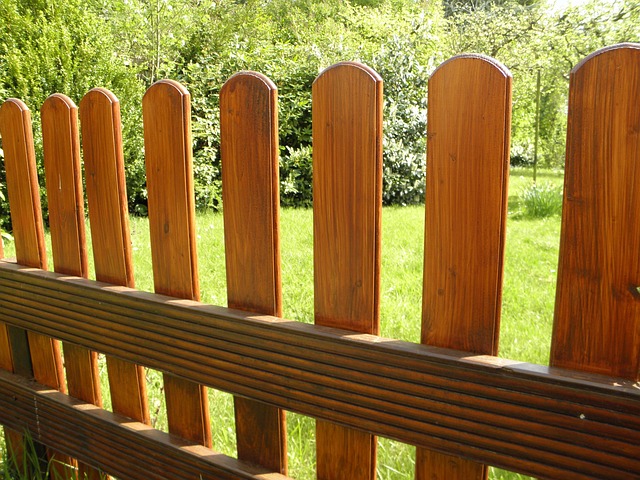For New Bedford, Massachusetts homeowners looking to enhance their outdoor spaces, installing a fence offers both privacy and aesthetic appeal. Before beginning your DIY project, understanding local regulations and selecting the ideal fence type is crucial. This article guides you through every step, from navigating New Bedford’s fencing rules to assembling your chosen fence with ease. We’ll also share essential tips for maintenance, ensuring your new barrier stands the test of time.
- Understanding New Bedford's Fencing Regulations
- Choosing the Right Fence for Your Yard
- Measuring and Planning Your Fence Layout
- Tools and Equipment Needed for Installation
- Step-by-Step Guide to DIY Fence Assembly
- Tips for Maintenance and Longevity of Your Fence
Understanding New Bedford's Fencing Regulations
Before beginning any DIY fence installation project, New Bedford homeowners should familiarize themselves with local regulations and permit requirements. The city of New Bedford has specific guidelines regarding fencing to ensure aesthetic harmony and safety within the community. These regulations cover various aspects, including fence height, materials used, and placement. Homeowners must check with the local building department to obtain the necessary permits, which may include detailed plans and specifications for the proposed fence. Understanding these rules upfront can save time, avoid potential fines, and ensure a smooth installation process.
Choosing the Right Fence for Your Yard
When selecting a fence for your New Bedford yard, consider both functional and aesthetic factors. Think about the purpose of the fence—is it for privacy, security, or simply to define your property lines? Different fence styles serve different purposes; for example, a tall wooden privacy fence offers maximum seclusion, while a low metal border fence can effectively mark property boundaries without blocking views.
Additionally, think about your yard’s unique characteristics. Consider the climate, as some materials may be better suited to withstand New Bedford’s winters. The terrain and existing vegetation should also guide your choice; for instance, a sturdy, low-maintenance fence might be ideal if your yard has challenging topography or abundant tree roots.
Measuring and Planning Your Fence Layout
When planning your new fence installation, accurate measuring is key to a successful DIY project. Start by walking the perimeter of your desired fence line, noting any changes in elevation or obstacles like trees or utility lines. These factors will influence both the length and height of your fence. Use a tape measure to take precise measurements at regular intervals along the route, ensuring you account for gate placement and any decorative elements you plan to incorporate.
Create a detailed layout plan that includes dimensions, material choices, and where posts will be placed. This step is crucial for ensuring your fence is both structurally sound and aesthetically pleasing. Consider your property’s unique characteristics and local regulations regarding fence heights and materials to make informed decisions that align with both your design vision and legal requirements.
Tools and Equipment Needed for Installation
When it comes to DIY fence installation, proper tools and equipment are essential. For a standard wood or vinyl fence, you’ll need a range of hand tools and power tools. Start with a measuring tape for accurate dimensions, a level to ensure your posts are plumb, and a post-hole digger or mechanical auger for drilling holes. A hammer or electric drill with a screwdriver bit is crucial for setting the posts, while a saw (hand or circular) will help cut the fence panels to size. Don’t forget safety gear like work gloves and eye protection, especially when operating power tools. Additionally, you’ll require concrete for setting the posts firmly in the ground, as well as fencing specific fasteners such as nails or screws, depending on your chosen material. Having these essentials on hand will make the installation process smoother and more efficient.
Step-by-Step Guide to DIY Fence Assembly
To tackle DIY fence installation, start by gathering all necessary materials and tools, including your fence panels, posts, brackets, concrete mix, a level, a drill, a hammer, and any hardware specific to your panel style. Clear the area where you’ll be installing, removing any plants or debris. Next, mark the spots where your posts will go using stakes and string to ensure a straight line. Dig holes for the posts, ensuring they’re deep enough (typically one-third to half the post’s height) and wide enough (typically 8-12 inches in diameter). Mix concrete according to package instructions and pour it into the holes, inserting the posts firmly. Let the concrete set for at least a day. Once the concrete is cured, attach brackets to the posts using the provided hardware. Finally, install your fence panels by sliding them onto the brackets, securing them with screws or nails as per manufacturer recommendations.
Tips for Maintenance and Longevity of Your Fence
Regular cleaning and maintenance are key to keeping your new fence in top condition. Start by sweeping or brushing away any loose dirt, debris, or leaves regularly. Use a pressure washer or soft-bristled brush for more stubborn buildup. Avoid using harsh chemicals as they can damage the finish. Apply a fresh coat of paint or sealant every few years to protect against the New Bedford, Massachusetts weather conditions and prolong the life of your fence.
Inspect your fence regularly for any signs of wear and tear, such as loose posts, cracked panels, or damaged hardware. Address these issues promptly to prevent further damage. Keep an eye out for pests like termites or wood borers that can infiltrate and weaken wooden fences. Regularly trim trees and shrubs away from the base of the fence to reduce potential harm caused by roots or branches.
